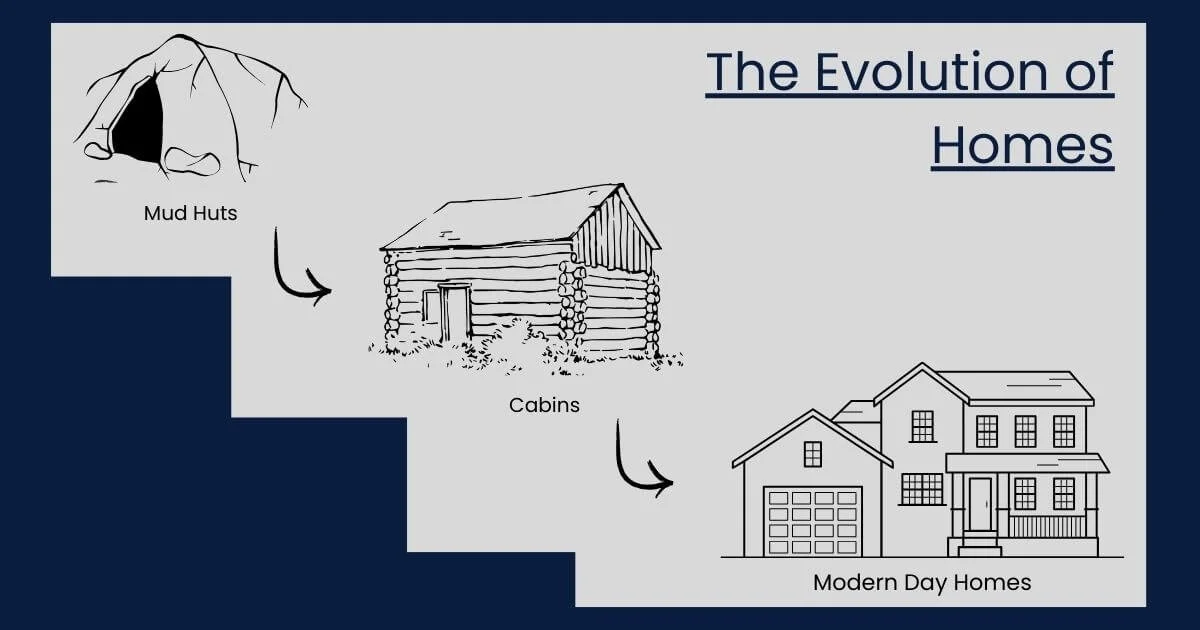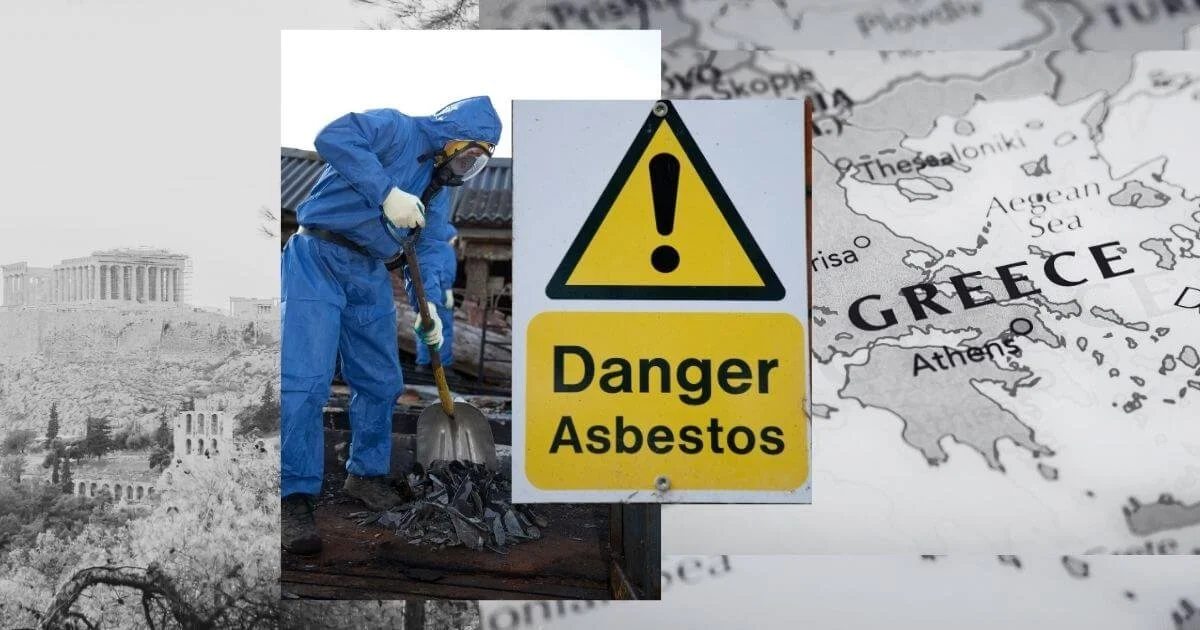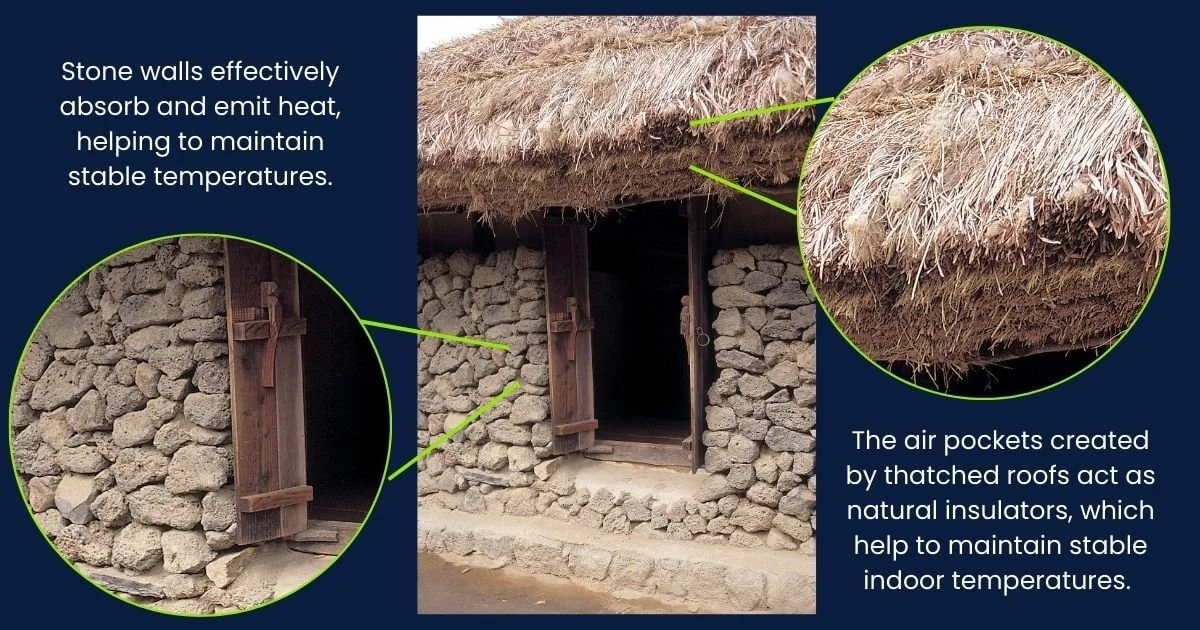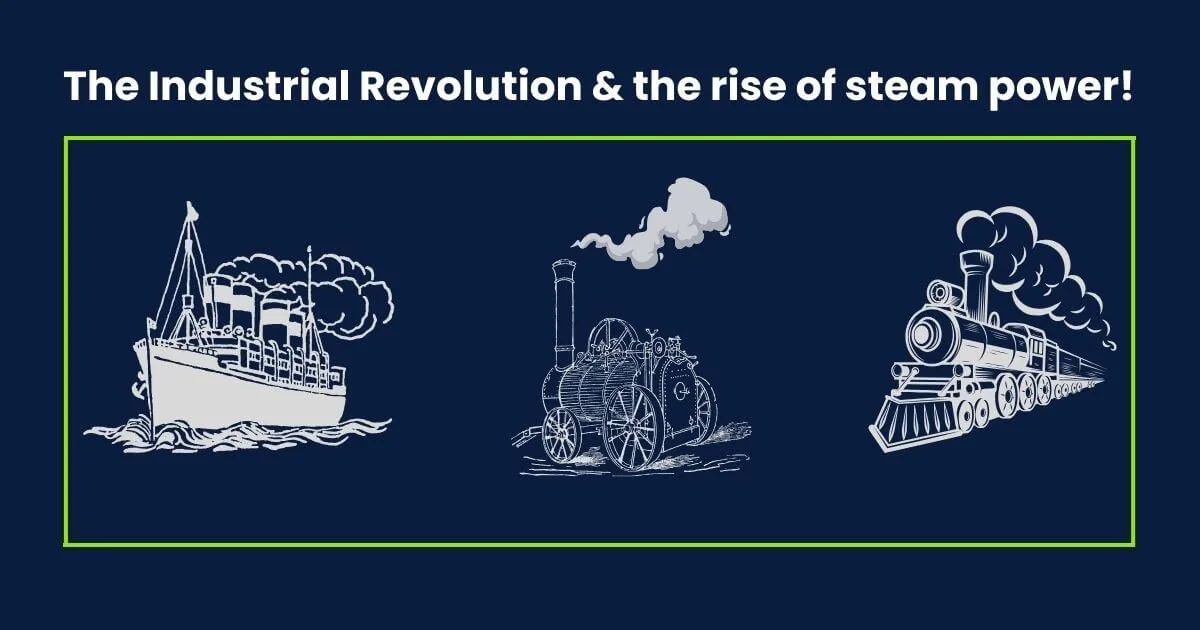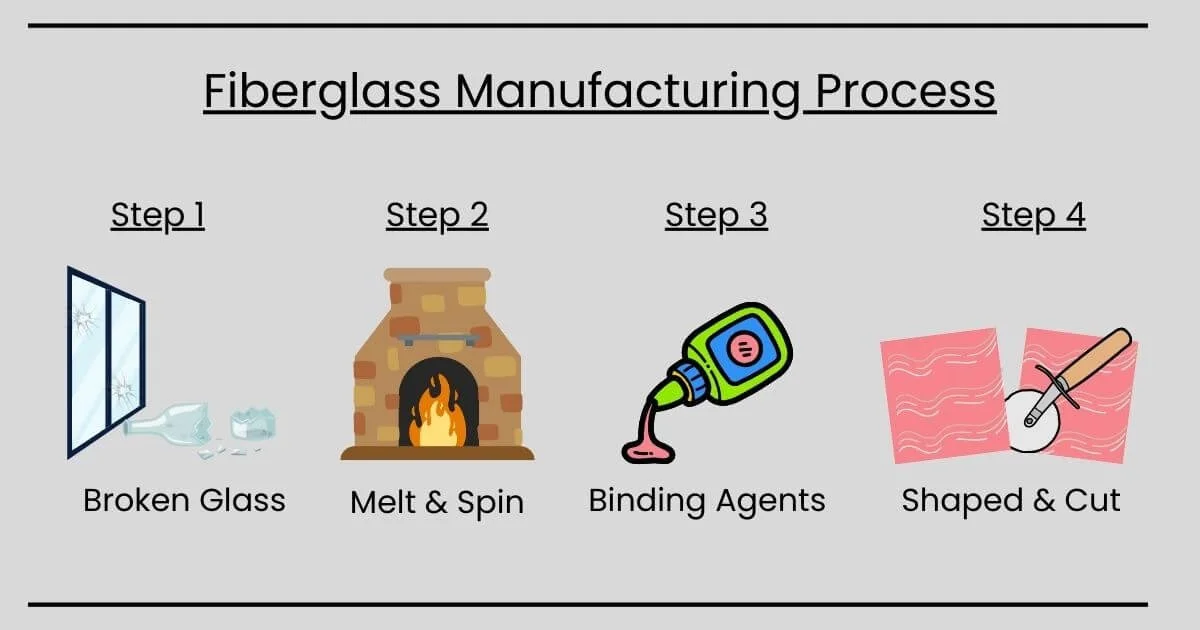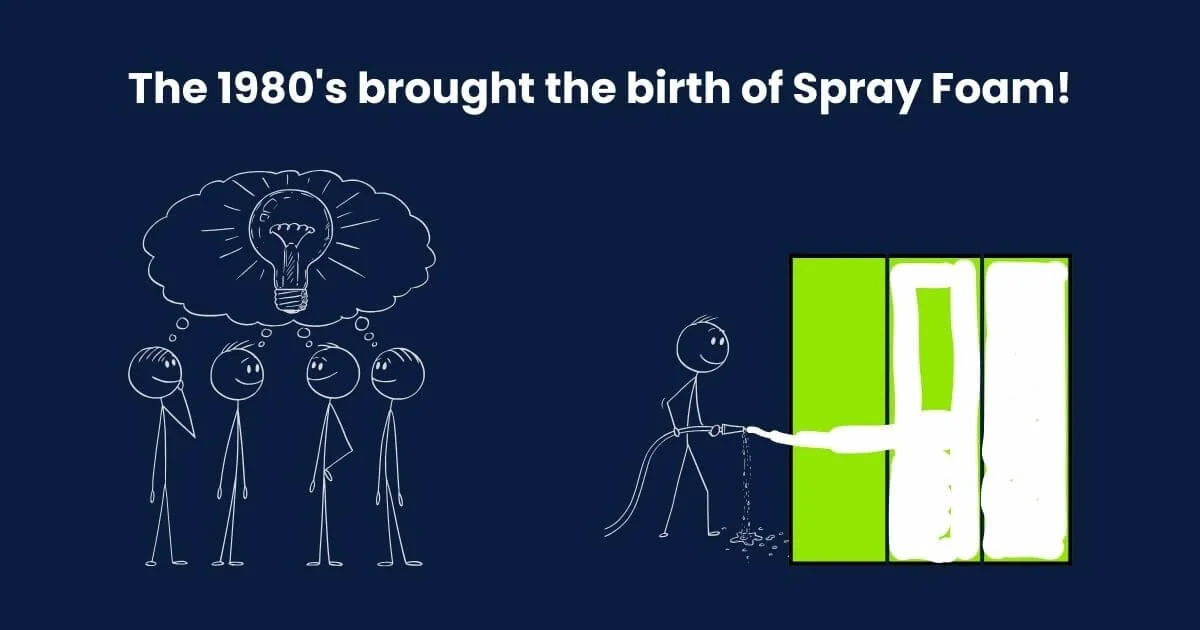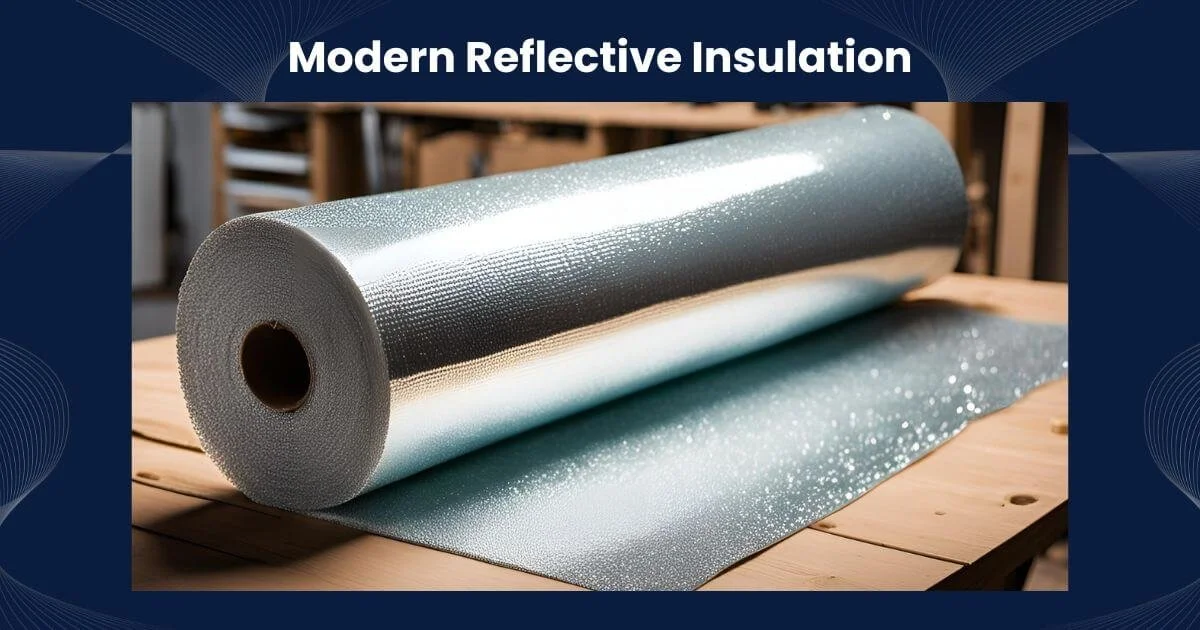History of Insulation: From Mud Huts to Modern Marvels
Have you ever wondered how our ancestors stayed cozy without their trusty thermostats? Let's embark on a fascinating journey through the history of insulation, from the ingenious ancient Egyptians to today's high-tech solutions.
Ancient Civilizations and Insulation
Ancient Egypt and Insulation
The ancient Egyptians were the original green builders. These architects figured out that mud bricks weren't just easy to make – they were nature's perfect insulation against the brutal desert heat.
The ancient Egyptians didn't stop at just slapping some mud together, though. They created sophisticated air gaps in their walls, working like the world's first thermal break. These gaps acted like tiny air conditioners, keeping homes cool when the sun was doing its best to turn everything into a sandy sauna.
Ancient Greece and the Discovery of Asbestos
The ancient Greeks were quite the innovators when it came to keeping their homes comfortable. They pioneered some pretty clever insulation techniques that we actually still use today – though thankfully, not all of them!
Let's talk about their biggest discovery first: asbestos. The ancient Greeks were the first to discover and name this mineral, thinking they'd struck gold with its amazing heat-resistant properties. They called it "asbestos," meaning "inextinguishable," which probably seemed like a clever name at the time.
The Greeks used asbestos extensively to insulate their homes and buildings, impressed by how well it worked for better insulation against both heat and cold. They were particularly fond of using it in their cavity walls – a construction technique they developed that's actually still used today.
Speaking of walls, the Greeks were also pioneers in using air gaps in their construction. They created sophisticated wall systems with air spaces between layers, working much like our modern thermal breaks. These air gaps helped regulate temperature and provided better insulation than solid walls alone.
But here's where the story takes a turn for the worse. While the Greeks' innovation with air gaps was brilliant, their love affair with asbestos didn't end so well. Fast forward a few thousand years, and we now know that asbestos is highly toxic. It's been banned in most countries and replaced with much safer alternatives for insulation.
Medieval Period: Keeping Castles Warm
Remember that scene in every medieval movie where there are tapestries hanging on castle walls? Turns out those weren't just for showing off the family crest! During the Middle Ages, people got seriously creative with their insulation needs – because let's face it, those thick stones walls were great for keeping armies out, but they weren't exactly cozy.
The medieval solution to keeping warm was actually pretty ingenious. First, they built their homes with thick stones that provided some basic insulation against cold air. But here's where it gets interesting – they didn't stop there. They basically turned their walls into medieval layer cakes of warmth:
Layer 1: Those massive stone walls we mentioned (great for defense, decent for insulation)
Layer 2: Tapestries hung strategically to trap air between the wall and fabric
Layer 3: Sometimes, they'd even add animal furs behind the tapestries for extra warmth
But the real medieval insulation MVP? That would be the thatched roofs. These weren't just random piles of straw thrown on top of houses – they were carefully engineered systems that worked surprisingly well at trapping warm air inside during those chilly winter months.
The thatched roofs were particularly clever because they:
Created natural air pockets that trapped heat
Provided excellent water resistance (when properly maintained)
Lasted for decades with proper care
Offered better insulation than any other roofing material available at the time
Here's a fun fact that might surprise you: some of these medieval insulation techniques were so effective that they're still used today! While we might not be hanging tapestries everywhere (though maybe we should bring that back?), the basic principle of using air gaps and layered materials for insulation remains a cornerstone of modern building techniques.
And speaking of staying warm, the Middle Ages also gave us another insulation innovation: the chimney! Before this period, homes just had a hole in the roof for smoke to escape. Not exactly efficient when you're trying to keep the warm air in and the cold air out. Medieval builders figured out that a proper chimney could help manage both heat and smoke while keeping the rest of the house better insulated.
The Industrial Revolution: When Insulation Got Serious
The Industrial Revolution changed everything – including how we think about keeping things warm (or cool). Suddenly, we weren't just trying to keep people comfortable; we had to figure out how to insulate hot pipes and manage steam power systems.
This era saw major advances in insulation material development. Unfortunately, this included the widespread use of asbestos for insulating pipes. The Industrial Revolution saw the rise of steam power, which required the use of insulation to keep pipes hot.
Asbestos was widely used to wrap pipes and protect workers from heat.
The Industrial Revolution also saw the development of new insulation materials, such as fiberglass and cellulose.
These materials were more energy-efficient and safer than asbestos, and they paved the way for modern insulation techniques.
20th Century Insulation Innovations
1930s – 1940s: The Rise of Fiberglass Insulation
Fiberglass insulation emerged as a game-changer in the 1940s. Unlike anything that came before, this innovative material came in neat, manageable sheets that could be placed in walls, attics, and basements.
Here's what made fiberglass insulation such a breakthrough:
It came in pre-cut sheets -no more stuffing random materials into your walls!
You could actually see what R-value you were getting
It was significantly more energy efficient than previous options
It didn't settle or compress over time like other materials
And bonus: it wasn't going to catch fire like some earlier insulation types
The timing couldn't have been better for fiberglass insulation to hit the market. Post-World War II housing was booming, and suddenly everyone wanted their piece of the American Dream - complete with a well-insulated home. Wall insulation went from being a luxury to a standard feature, and fiberglass led the charge.
Fun fact: The distinctive pink color we associate with fiberglass insulation? That was actually a stroke of marketing genius. The manufacturers added the dye to make their product stand out and create brand recognition.
1950s – 1970s: Cellulose Insulation Emerges
In the 1950s, somebody had the brilliant idea to turn newspapers into cellulose insulation. Of course, early versions had a slight tendency to catch fire, but adding fire retardant solved that little problem.
Cellulose insulation was popularized in the 1950s and 1960s, made from newspaper, cardboard, and other materials.
Early versions were flammable, but a fire retardant was added in the 1950s to make it safer.
Cellulose insulation was a major innovation in the history of insulation, and it remains a popular choice for home insulation today.
1980s: The Birth of Spray Foam Insulation
The 1980s gave us polyurethane spray foam insulation. Originally created by the military, spray foam insulation became the cool kid on the block in the 1980s.
Polyurethane spray foam insulation was widely used, filling small spaces and expanding easily.
It was originally created by the military in the 1940s but gained popularity in the 1980s.
Spray foam insulation is highly energy-efficient and provides excellent thermal insulation, making it a popular choice for modern homes.
Modern Insulation Techniques and Innovations
Modern Home Insulation
In these modern times, insulation is a combination of everything we've learned over the thousands of years of keeping ourselves comfortable. We've got:
Highly energy efficient spray foam that expands into every crack
Eco-friendly cellulose made from recycled materials
Advanced fiberglass that would make those 1940s inventors proud
Industrial Insulation
Modern industrial facilities are using some seriously sophisticated technology. Let's look at some of these incredible innovations!
First up, we have vacuum insulation panels. These high-tech panels create an almost perfect vacuum, dramatically reducing heat transfer. They're so effective that they can provide the same level of insulation as traditional materials while being up to 10 times thinner.
Reflective insulation is another star player in the industrial world. These materials bounce thermal radiation right back where it came from. They're particularly effective in hot climates to manage heat. Industrial buildings combine these systems with other insulation types to create what we call a "thermal defense system”.
But the real heavyweight champion in modern industrial insulation has to be high-tech polyurethane spray foam. Unlike its residential cousin, industrial spray foam is engineered to handle extreme temperatures and demanding conditions.
These industrial-grade materials do more than just maintain temperature - they’re for:
Protecting sensitive equipment from temperature fluctuations
Preventing condensation that could damage expensive machinery
Maintaining precise environmental conditions for manufacturing processes
Reducing energy costs on a massive scale
Meeting strict industrial safety standards and regulations
Wrapping It Up: From Ancient Innovation to Your Modern Home
The story of insulation is really the story of human ingenuity – our never-ending quest to stay comfortable while being energy efficient. Whether it's the ancient Greeks with their air gaps, medieval builders with their clever thatched roofs, or today's spray foam insulation that fills every nook and cranny, we've always found ways to keep the warm air in and the cold air out.
Ready to be part of this continuing story? While we can't offer you Egyptian mud bricks (though we'd love to see the look on the building inspector's face!), we can provide you with modern insulation solutions that would make our ancestors jealous.
Give us a call today, and let's make your home's insulation history-worthy.

